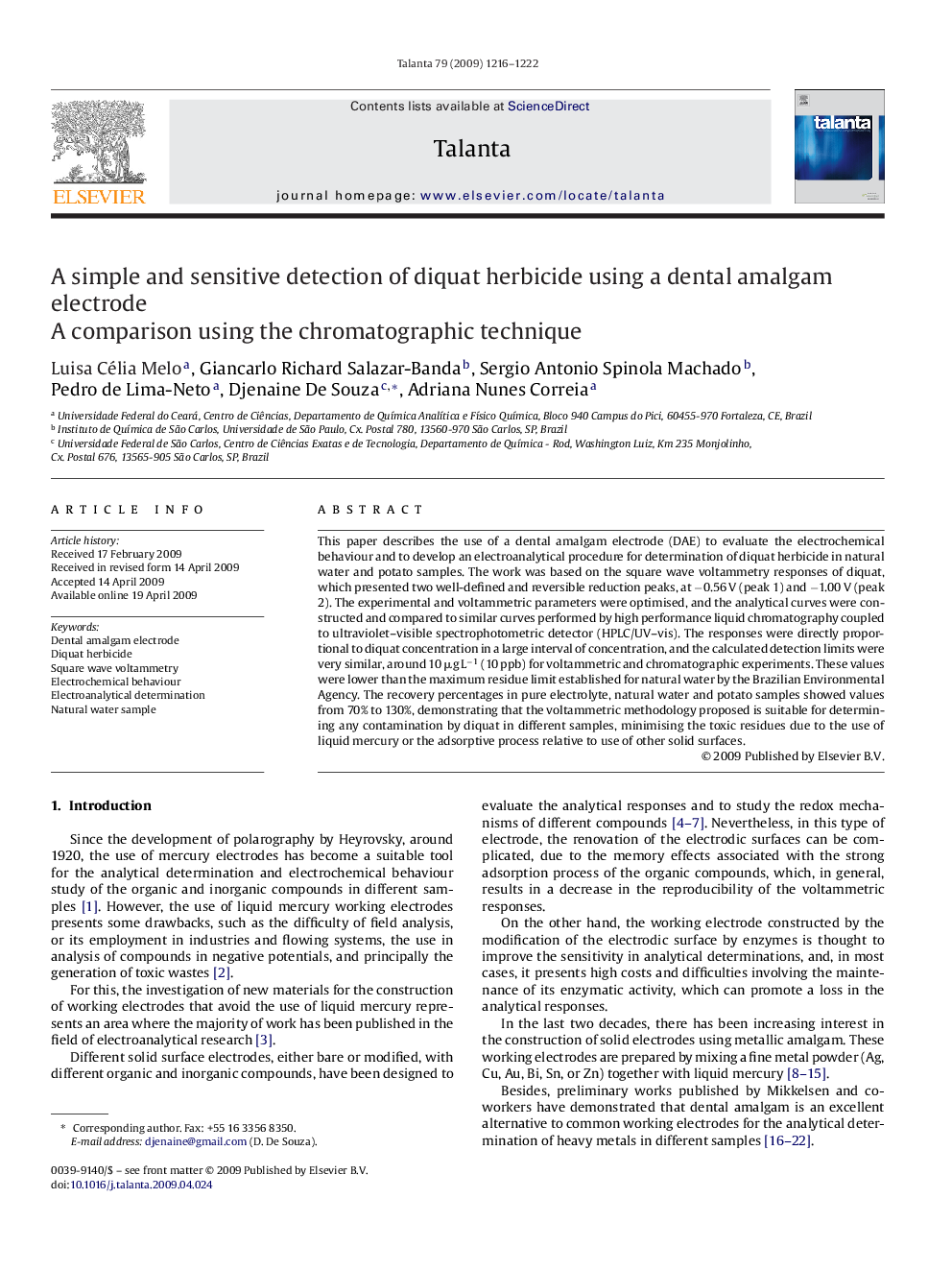| Article ID | Journal | Published Year | Pages | File Type |
|---|---|---|---|---|
| 1246812 | Talanta | 2009 | 7 Pages |
This paper describes the use of a dental amalgam electrode (DAE) to evaluate the electrochemical behaviour and to develop an electroanalytical procedure for determination of diquat herbicide in natural water and potato samples. The work was based on the square wave voltammetry responses of diquat, which presented two well-defined and reversible reduction peaks, at −0.56 V (peak 1) and −1.00 V (peak 2). The experimental and voltammetric parameters were optimised, and the analytical curves were constructed and compared to similar curves performed by high performance liquid chromatography coupled to ultraviolet–visible spectrophotometric detector (HPLC/UV–vis). The responses were directly proportional to diquat concentration in a large interval of concentration, and the calculated detection limits were very similar, around 10 μg L−1 (10 ppb) for voltammetric and chromatographic experiments. These values were lower than the maximum residue limit established for natural water by the Brazilian Environmental Agency. The recovery percentages in pure electrolyte, natural water and potato samples showed values from 70% to 130%, demonstrating that the voltammetric methodology proposed is suitable for determining any contamination by diquat in different samples, minimising the toxic residues due to the use of liquid mercury or the adsorptive process relative to use of other solid surfaces.
